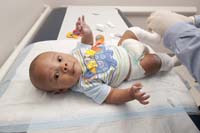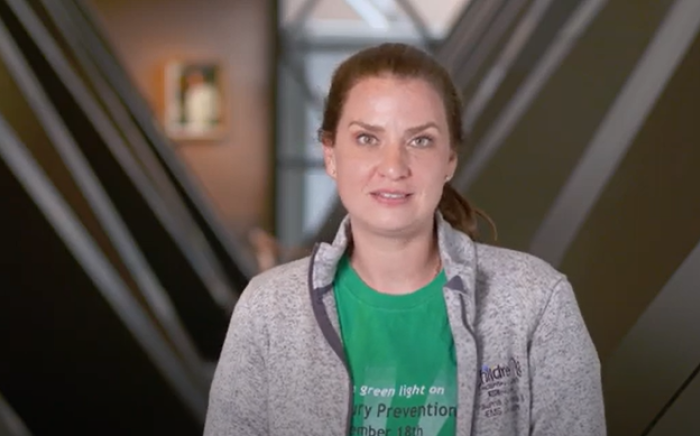About one baby in 10,000 is born with the foot deformity known as vertical talus. In about half of those cases, both feet are affected. The disorder occurs with equal frequency in boys and girls.
St. Louis Children’s Hospital offers a nonsurgical approach for correcting vertical talus. In most cases, this approach eliminates the need for patients to undergo surgery as infants and helps lessen the possibility of problems developing later in their lives.
What is vertical talus?
Like clubfoot, vertical talus is a congenital foot disorder, which means it is present in babies at birth. The foot turns outward, creating a rigid flat foot. To visualize it, think of the foot’s arch curving down and out like the bottom of a rocking chair.
Left untreated, a child with vertical talus begins walking on the inside of the foot. This leads to the formation of painful calluses, skin breakdown and foot pain. It affects a child’s gait and ability to wear properly fitting shoes.
What causes vertical talus?
Most cases of vertical talus are idiopathic, meaning the cause is unknown. Sometimes it is associated with abnormalities in the chromosomes. These abnormalities result in a syndrome or neuromuscular disorder that in turn disrupts the foot’s structure. A medical examination or blood test usually determines whether or not the condition is idiopathic. However, there is increasing evidence that these unknown causes are related to defects in genes involved in early limb development.
Prevention of vertical talus is not possible. It is unlikely that anything you did during pregnancy could have caused the disorder.
How is vertical talus treated?
Vertical talus will not resolve by itself and needs medical attention. The treatment for vertical talus is similar to that of clubfoot. St. Louis Children’s Hospital has become the nation’s premier foot deformity clinic specializing in the nonsurgical Ponseti method for cast correction of clubfoot. We used our expertise to develop and advance a modified Ponseti method for the treatment of vertical talus.
Even when well corrected through the modified Ponseti method, however, vertical talus tends to relapse. For that reason, parents play a key role in the success of treatment by closely following instructions for bracing and stretching. This requires patients to wear a brace for 23 hours a day during the first three months, and then 12-14 hours a day (naps and nighttime) for two years. Parents also are taught stretching exercises for their child’s foot that are done at every diaper change (at least four times a day) to maintain flexibility.

Although the treatment process is labor intensive, it helps prevent children from having to undergo more complicated surgeries and experiencing problems with arthritis and mobility problems in adolescence and adulthood.
Research
We are researching the genetic factors responsible for vertical talus. The ultimate goal is to discover a means of preventing the condition.
More information
For more information about vertical talus and its nonsurgical correction with the modified Ponseti method at St. Louis Children’s Hospital, contact us at 314.454.5437 or 800.678.5437.












